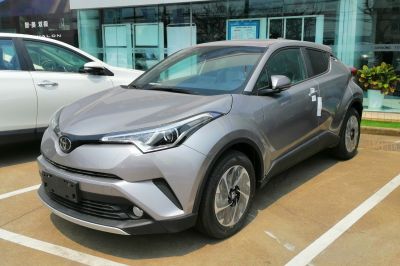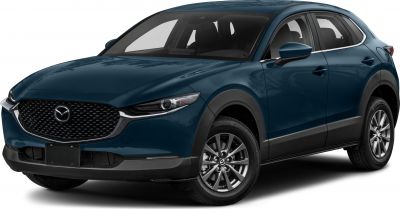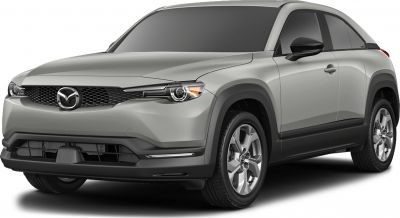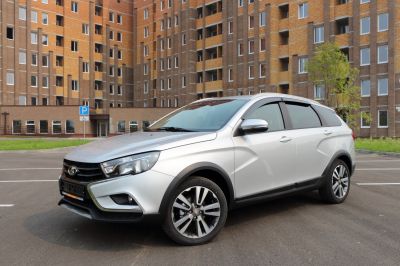 1992 GMC Typhoon Dimensions, Size & Specs
1992 GMC Typhoon Dimensions, Size & SpecsMeasurements of the 1992 GMC Typhoon, engineered for optimal performance and comfort
| Dimensions | |
|---|---|
| Length: | 4326 mm170.3 in14.2 ft |
| Width: | 1732 mm68.2 in5.7 ft |
| Height: | 1524 mm60.0 in5.0 ft |
| Weight Specifications | |
| Curb Weight: | 1734 kg3823 lbs |
| Tire Specifications | |
| Rims Size: |
|
| Tire Size: |
|
The 1992-1993 GMC Typhoon is a compact yet powerful SUV renowned for its unique blend of sporty performance and classic utility dimensions. Manufactured during a brief production run from 1992 to 1993, the GMC Typhoon stands out in the early 90s SUV market for its turbocharged engine and aggressive styling. Measuring 4326 millimeters (approximately 170.3 inches) in length, 1732 millimeters (about 68.2 inches) in width, and 1524 millimeters (around 60 inches) in height, the Typhoon is compact enough for urban maneuverability while still providing a commanding presence on the road. The curb weight is notably moderate at 1734 kilograms (about 3825 pounds), contributing to its agility and responsive handling compared to larger, bulkier SUVs of the era. This model rides on 15-inch rims paired with 205/75 R15 tires, optimizing both ride comfort and on-road stability. The combination of its size and weight made the GMC Typhoon a unique option for drivers seeking an SUV with spirited performance without a large physical footprint. Overall, the GMC Typhoon remains a significant model in SUV history, offering a rare mix of compact dimensions with high-performance capabilities.
Discover the standout features that make the 1992 GMC Typhoon a leader in its class
Have a question? Please check our knowledgebase first.
The 1992 GMC Typhoon measures 4326 mm (170.3 inches) in length, 1732 mm (68.2 inches) in width, and 1524 mm (60 inches) in height. These dimensions define the vehicle's compact SUV footprint, making it relatively agile compared to larger SUVs. The moderate length and width contribute to easier maneuverability in urban environments, while the height offers a commanding driving position typical of SUVs. This size allows the Typhoon to balance sporty performance with everyday usability, fitting within most standard parking spaces and contributing to its unique identity as a sporty, mid-sized SUV in the early 1990s.
The 1992 GMC Typhoon has a curb weight of approximately 1734 kg (3824 lbs). This weight is significant for an SUV of its era, influenced by its robust construction and turbocharged engine components. The relatively heavy curb weight contributes to stability at high speeds and enhances traction, especially considering its all-wheel-drive system. However, it also means that the vehicle requires sufficient engine power to maintain sporty performance. The Typhoon's turbocharged 4.3-liter V6 engine compensates well for this weight, delivering impressive acceleration and making it one of the fastest SUVs of its time. Consequently, the curb weight complements its design as a high-performance SUV rather than a lightweight off-road vehicle.
The GMC Typhoon rides on 15-inch rims paired with 205/75 R15 tires. These tire dimensions offer a balanced combination of grip, comfort, and durability. The 205 mm tire width (approximately 8.1 inches) ensures adequate road contact to handle the SUV's turbocharged power and all-wheel-drive system effectively. Meanwhile, the 75 aspect ratio indicates moderately tall sidewalls, providing a smoother ride over rough surfaces while still maintaining good handling characteristics. The 15-inch rim size was standard for SUVs of the early 1990s and helped the Typhoon maintain its sporty yet practical nature, contributing positively to its on-road performance and everyday usability.
Yes, the 1992 GMC Typhoon is designed with dimensions that generally allow it to fit inside a standard residential garage. With an overall length of 4326 mm (170.3 inches or about 14.2 feet) and a width of 1732 mm (68.2 inches or about 5.7 feet), it should comfortably fit most single-car garages that typically range from 3 to 3.7 meters (10 to 12 feet) in width and around 6 meters (20 feet) in length. The vehicle's height of 1524 mm (60 inches or 5 feet) also suits typical garage door clearances. However, it is advisable to confirm your garage's specific internal dimensions, especially width and overhead clearance, to ensure adequate space for door opening and vehicle access.
The 1992 GMC Typhoon does not have a direct predecessor model as it is a unique high-performance variant of the GMC Jimmy SUV line. The Typhoon was introduced as a distinct, turbocharged all-wheel-drive SUV that combined the body shell of the GMC Jimmy with a significantly more powerful engine and upgraded components. Compared to the base GMC Jimmy of the early 1990s, the Typhoon shares the same overall dimensions—length of approximately 4326 mm, width of 1732 mm, and height of 1524 mm—but differs vastly in performance capability and curb weight due to additional equipment and enhancements. Therefore, while dimensionally similar, the Typhoon stands apart in terms of performance and specialized engineering rather than size changes from a predecessor.
In the early 1990s, the GMC Typhoon was considered a compact to mid-sized SUV, giving it a distinct size compared to contemporaries. Its length of 4326 mm (170.3 inches) and width of 1732 mm (68.2 inches) made it smaller than full-size SUVs like the Chevrolet Suburban, which could exceed 5300 mm (209 inches) in length, and slightly larger or comparable to many compact SUVs such as the Jeep Cherokee or Ford Explorer of that era. The Typhoon’s relatively moderate height of 1524 mm (60 inches) also made it somewhat lower than many traditional off-road SUVs. This compact yet muscular design contributed to better on-road dynamics and agility, aligning with its sporty performance focus, unlike bulkier, traditional SUVs primarily designed for off-road utility.
The 1992 GMC Typhoon, based on the GMC Jimmy platform, offers a relatively spacious interior for a compact SUV of its time. Its exterior dimensions provide enough cabin space to comfortably seat four adults, with reasonable headroom and legroom supported by its 1524 mm (60 inches) height and overall vehicle width. The boxy design maximizes usable interior volume, allowing for good shoulder room and cargo capacity behind the rear seats. While it’s not as voluminous as larger SUVs, the Typhoon balances interior comfort with sporty design, making it practical for everyday use while emphasizing performance. Passengers benefit from its elevated seating position, enhancing visibility and comfort during rides.
The size and weight of the 1992 GMC Typhoon significantly influence its identity as a high-performance SUV. Weighing in at around 1734 kg (3824 lbs) with a compact footprint of roughly 4326 mm by 1732 mm, the Typhoon uses its mass to enhance traction and stability, especially under acceleration and in varied driving conditions. Its modest dimensions improve agility, allowing the turbocharged 4.3-liter V6 engine to propel the SUV with impressive speed and responsiveness for its class. The all-wheel-drive system combined with balanced weight distribution makes the Typhoon a rare example of an SUV with genuine sports car-like characteristics for the era, exploiting its size and weight to deliver thrills without compromising everyday usability.
The 1992 GMC Typhoon stands out among early 1990s SUVs chiefly because of its unique combination of turbocharged performance and all-wheel drive packaged into a relatively compact SUV body. Unlike most SUVs of its time, which prioritized off-road capability and utility, the Typhoon was designed with acceleration and on-road handling in mind, boasting a turbocharged 4.3-liter V6 engine delivering around 280 horsepower. Its sports-sedan-like performance contrasted sharply with the boxier, less agile SUVs available then. This focus on performance combined with practical dimensions gave it a unique niche as a performance SUV pioneer, effectively making it a precursor to later performance-focused sport utility vehicles.
Given the compact to mid-sized dimensions of the GMC Typhoon, it offers a practical amount of cargo space suitable for family outings or daily use. While exact cargo volume figures vary, the rear storage space behind the second row provides adequate room for groceries, luggage, or recreational gear typical for a vehicle of its class. The boxy SUV shape maximizes interior volume, allowing for flexible cargo management when rear seats are folded or occupied. Although it may not match the cargo capacity of larger SUVs or dedicated family wagons, the Typhoon balances cargo space with sporty design, making it a versatile option for users needing both performance and practicality in one vehicle.
Discover similar sized cars.

| Production: | 2020-2023 |
|---|---|
| Model Year: | 2020 |
| Length: | 4390 mm172.8 in |
| Width: | 1795 mm70.7 in |
| Height: | 1565 mm61.6 in |

| Production: | 2020-present |
|---|---|
| Model Year: | 2020 |
| Length: | 4390-4405 mm172.8-173.4 in |
| Width: | 1795 mm70.7 in |
| Height: | 1565-1575 mm61.6-62.0 in |

| Production: | 2018-2020 |
|---|---|
| Model Year: | 2018 |
| Length: | 4405 mm173.4 in |
| Width: | 1795 mm70.7 in |
| Height: | 1565 mm61.6 in |

| Production: | 2019-present |
|---|---|
| Model Year: | 2019 |
| Length: | 4395 mm173.0 in |
| Width: | 2040 mm80.3 in |
| Height: | 1540-1567 mm60.6-61.7 in |

| Production: | 2020-present |
|---|---|
| Model Year: | 2020 |
| Length: | 4395 mm173.0 in |
| Width: | 2035 mm80.1 in |
| Height: | 1555 mm61.2 in |

| Production: | 2017-present |
|---|---|
| Model Year: | 2017 |
| Length: | 4424 mm174.2 in |
| Width: | 1785 mm70.3 in |
| Height: | 1537 mm60.5 in |

| Production: | 2015-present |
|---|---|
| Model Year: | 2015 |
| Length: | 4424 mm174.2 in |
| Width: | 1785 mm70.3 in |
| Height: | 1532 mm60.3 in |
